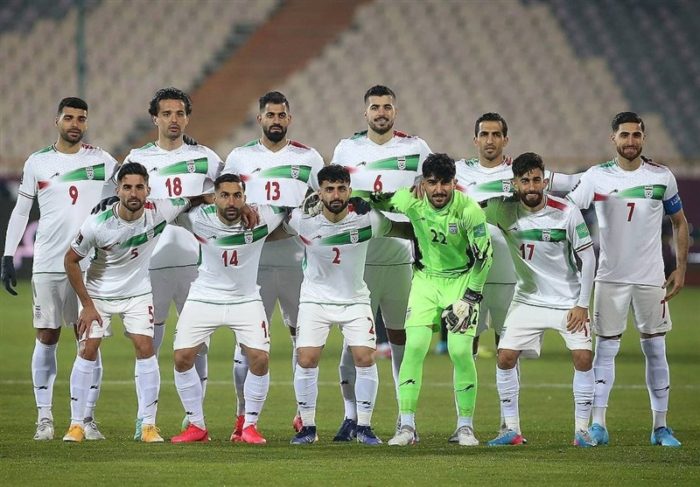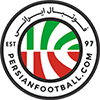The Guardian: World Cup 2022 team guide [Iran]

The Guardian – LONDON, Carlos Queiroz is back in charge but look out for a more progressive style on the pitch and protests in the stands.
The plan
Defensive solidity and scoring goals on counterattacks have been the main characteristics of Team Melli for some time and helped Carlos Queiroz shape his unprecedented popularity during his first stint in charge between 2011 and 2019. At the 2014 and 2018 World Cups they came up against some of the great football powerhouses but lost 1-0 to Argentina in Brazil and 1-0 to Spain in Russia, where they also drew 1-1 with Portugal. The performance against Lionel Messi’s Argentina impressed Iranians back home so much there were celebrations in the streets after the narrow defeat.
The big downside of Queiroz’s tactics was that Iran struggled to score goals against so-called weaker opposition. They were not able to dominate games and when they did throw players forward the defence was vulnerable; in Queiroz’s last game of his first spell Iran conceded a sloppy goal against Japan in the semi-final of the 2019 Asian Cup and when they then pressed for an equaliser, they let in a further two goals.
Queiroz, of course, has not changed completely. The onus is still on a solid defence but the two games in September – a 1-0 win against against Uruguay and 1-1 draw with Senegal – showed Iran are trying to play more from the back and press the opponent higher up the pitch.
They are likely to play in a 4-1-4-1 formation at the World Cup and the main question concerns who plays up front. Sardar Azmoun would be the favourite but he has been injured. If he is not fit, Mehdi Taremi is likely to step in. If Azmoun can play, Taremi is likely to start as a left winger.
The coach
Carlos Queiroz. Sir Alex Ferguson’s former right-hand man is so popular among Iranian football fans that they did not have any issue with him replacing Dragan Skocic, who won 15 out of his 18 games in charge and got the country to the World Cup in record time before he was sacked earlier this year. Not even the farcical circumstances in which Queiroz returned dampened the mood. This is the third time Queiroz will lead Iran at a World Cup but this time it was Iran who got him there rather than the other way around. In fact he had failed to reach Qatar with Colombia and Egypt. If things go well he may well extend his short-term contract and stay on for next summer’s Asian Cup, which is also in Qatar.
Star player
“I regret that this boy did not go to European football much earlier. It’s all my fault,” Mehdi Taremi’s father cried on a TV show a few months ago and his thoughts echoed those of pretty much everyone in Iran. After years of scoring in Iran and Qatar he finally made the move to Portugal in 2019, joining Rio Ave before a transfer to Porto a year later. He averages about a goal every other game in Europe, and for Iran. Taremi, 30, has come a long way since a last-minute miss for his country against Portugal at the 2018 World Cup. He appears to be getting better and takes comfort from the fact that all recent Ballon d’Or winners have been 30 years or older.
Unsung hero
When Saeed Ezatolahi moved to Atlético Madrid’s B side as a 17-year-old in 2014 everyone expected him to have a brilliant club career ahead of him. It may not have turned out quite like that – he is now with Vejle in Denmark having spent a considerable amount of time in Russia – but it is a different story with Team Melli. He is a certain starter for Iran, his work rate appreciated by everyone. His absence was keenly felt in Iran’s first game at Russia 2018 and Queiroz will hope he won’t have the same headache this time.
Qatar stance
Iran has had tense relationships with several Arab countries in recent years but Qatar has been a rare ally and the impact they have had on the football world is serving as a role model for Iranians. There is nothing but praise for Qatar among Iranian football figures and there are many who think the migrant worker situation is not as bad as western media paints it. Iranian fans may well have banners protesting over something in Qatar, but it won’t be about the workers.
National anthem
Iran’s current national anthem, Sorude Melliye Jomhuriye Eslamiye Iran, is the second it has had after the Islamic revolution in 1979. The first was too long so in 1990 the government decided to replace it with a shorter one. The famous poet and songwriter Sayed Bagheri wrote the lyrics and Hassan Riahi composed the music, although some accused him of copying South Korea’s national anthem (to be fair they have quite a bit in common). The lyrics refer to the Islamic revolution and in the final line express the hope that the Islamic republic of Iran will survive for ever. This is something fans may protest against and try to challenge in Qatar.
All-time cult hero
Who else but the man who was the top scorer in the world at international level until Cristiano Ronaldo broke his 109-goal-record last year? Nearly two decades after his last appearance for Team Melli, Ali Daei (his nickname Shahriar means “The King” in farsi) is still the poster boy of Iranian football. He was one of eight Fifa legends taking part in the draw for the Qatar World Cup but has been banned from coaching for three years after an outburst against a club president. Has been supportive of the recent protests in the country and had his passport seized by the authorities for a week.




